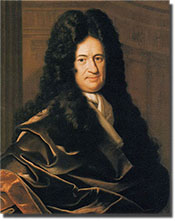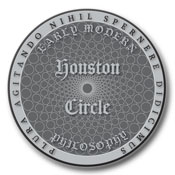Leibniz's Skull?
Leibniz died on Saturday 3/14 November 1716 in Hanover, where his remains were eventually interred, on Monday 3/14 December 1716, in an unmarked grave near the ducal palace in the Neustädter Kirche. For many years the grave was neglected, until, in 1790, a large sandstone marker was set in place bearing the simple inscription, Ossa Leibnitii. Even at that time, however, doubts were raised as to whether the marker had been placed over the right grave. These doubts were exacerbated by the fact that the church documents relating to Leibniz's burial had been lost. Eventually, on Friday 4 July 1902, the remains under the Leibnitian marker were exhumed. On Wednesday 9 July 1902, they were examined by one Professer Dr. W. Krause, by order of one Herr Waldeyer. Whatever casket had occupied the grave was by then entirely rotted away and thus left not a clue as to its original occupant. Nevertheless, Krause concluded that the skeletal remains were indeed those of Leibniz.
|
|
|
|
|
|
|
|
|
|
|
In 1902 Krause published his findings in two reports. One of these, entitled "Ossa Leibnitii," was published in the Abhandlungen der Königlich Preussischen Akademie der Wissenschaften. The other, entitled "Schädel von Leibniz," was published in the Zeitschrift für Ethnologie 34 (1902), pp. 471-482. Of the figures shown above, Figs. 2 and 2a-2d were published together with the first report; Figs. 1-3 were published together with the second. Fig. 1 is a lithograph after an engraving of Leibniz by Bernigeroth; Fig. 2 is a frontal-view picture of the skull recovered from the grave under the Leibnizian marker; Fig. 2a is a lateral-view picture of the same; Fig. 2b is an occipital-view picture of the same; Fig. 2c is a superior-view picture of the same; Fig. 2d is a basal-view picture of the same; and Fig. 3 is, in Krause's words, "the skull of Fig. 2 projected on Fig. 1" ("Shädel," p. 479). (If one looks closely it will appear that Krause also added some Leibniz-like eyebrows to the wig-adorned skull!) Krause apparently sought to convince his readers that the skull exhumed from the grave under the Leibnizian marker was indeed that of Leibniz by insinuating a resemblance between the wig-adorned skull and the likeness of Leibniz preserved in the Bernigeroth engraving. However, Krause himself reported that the cranial capacity of the skull, at 1,422cc, was extremely small compared to the German average (ca. 1,696 cc), which, as Mates has observed, "hardly accords with Eckhart's testimony that Leibniz had a large head (Guhrauer 2, 334)" (Mates, p. 31n). And thus the mystery surrounding the ossa leibnitii remains unresolved to this day.
![]()
Sources
- Aiton, E. J. Leibniz: A Biography. Boston: Adam Hilger Ltd., 1985.
- Guhrauer, G. Gottfried Wilhelm Freiherr von Leibniz: Eine Biographie. 2 vols. Breslau, 1846; reprinted Hildesheim, 1966.
- Krause, W. "Schädel von Leibniz." Zeitschrift für Ethnologie 34 (1902), pp. 471-482.
- Krause, W. "Ossa Leibnitii." Ahandlungen der Königlich Preussischen Akademie der Wissenschaften (1902), pp. 1-11.
- Mates, Benson. The Philosophy of Leibniz. New York: Oxford University Press, 1986.












